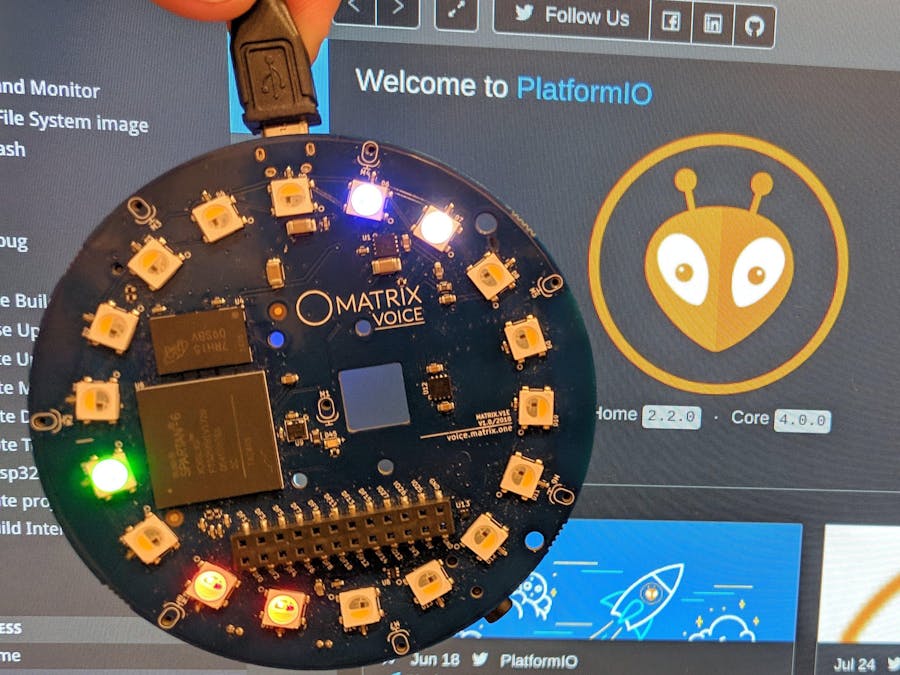Matrix The Voice Coder
Measuring 3.14 inches (8 cm) in diameter, this circular add-on should, in mathematical terms at least, prove a perfect fit for the Raspberry Pi. A GPIO header extender enables it to clear the Pi 3’s USB ports, but will also work with any newer 40-pin model, including the Pi Zero. It looks good mounted on top, a blue LED on its underside illuminating the Raspberry Pi board below.
Hitfilm 4 express serial key. Some effects – like the Chroma Key and Light Flares – can now be dragged.
Coding (LPC)-Introduction 2 LPC Methods. LPC methods are the most widely used in speech coding, speech synthesis, speech recognition, speaker recognition and verification and for speech storage – LPC methods provide extremely accurate estimates of speech parameters, and does it extremely efficiently. Download files and build them with your 3D printer, laser cutter, or CNC. Thingiverse is a universe of things. Matrix - The Voice Coder is 'The Vocoder for the 21st century'. What makes Matrix different to the vocoders in the past?: Precise analog modelling 8-pole filters and extremely fast envelope followers for unprecedented resynthesis quality. New voiced/unvoiced detection and pitch extraction algorithms for high intelligibility.
This article first appeared in The MagPi 68 and was written by Phil King
In essence, the Matrix Voice is a slimmed-down spin-off of Matrix’s original Creator board. Whereas the Creator was crammed with all sorts of sensors, and other bells and whistles, the Voice focuses on voice recognition. To this end, it retains the array of eight digital MEMS MP34DB02 microphones, although here they’re arranged differently: seven placed at regular intervals around the perimeter and an eighth in the middle. Audio processing – including noise cancellation and de-reverberation – is handled by a Xilinx XC6SLX9 Spartan 6 FPGA (field-programmable gate array), whose 9152 logic cells offer scope for customisation if you know how.
ESP or not
Two versions of the Voice are available: standard and ESP32 with built-in WiFi and Bluetooth. While the former relies on connection to a Raspberry Pi, the latter (costing an extra $10) can be programmed on a Pi before being set free to function as a standalone device. The most visually impressive aspect of the Voice is its circular ‘Everloop’ array of 18 RGBW LEDs. As well as the ability to display cool light patterns, this can provide useful visual feedback during voice interactions.
Near the middle of the board, as on the Creator, is a square hole for mounting a Camera Module if you wish. Elsewhere, a 24-pin female expansion header is connected to the FPGA to connect and control electronic components, but (testing it with a basic LED circuit) we were unable to use it to access the Raspberry Pi’s GPIO pins directly.
Many voices
One of the key plus points of the Voice is its compatibility with a wide range of voice assistant platforms, including Amazon Alexa, Google Assistant, and PocketSphinx. Disappointingly, however, getting started with the device is made more difficult by the lack of helpful, Voice-specific information on the Matrix website. A lot of the documentation and examples are related to the Matrix Creator, and the Voice data sheet only offered links to a couple of tutorials. Matrix tells us it is working on creating additional ones and improving the documentation.
Matrix The Voice Coder App
Following the Alexa step-by-step guide took over two hours, including lengthy Matrix software installation and setting up a developer account with Amazon. We had problems getting it to capture our voice at first, but upon reinstalling to a fresh Raspbian Stretch image it worked well. The mic array was able to pick up our “Alexa” wake-word even from the far side of the room, the LED loop glowing green as Alexa then listened to our enquiries and commands. For sound output to a speaker, for some reason we were advised to use the Raspberry Pi’s 3.5 mm jack rather than the one on the Voice.
Exploring Matrix’s GitHub repo, we discovered a PocketSphinx example to show LED patterns triggered by speaking various phrases. Examining the demo code (written, like the other examples, in C++) gave us an insight into how to listen for keywords and trigger the LEDs.
Of the few other code examples compatible with the Voice, we found one for sensing the direction of sounds using the eight mics. While possibly useful for a project, the demo code (for the Creator) would need altering to suit the Voice’s different mic array layout.
While the Matrix Voice is clearly a capable piece of hardware, until the documentation improves it’ll be hard to make the most of it.

Last word
3/5

Matrix The Voice Coder Jobs
The Matrix Voice hardware is polished, capable, and versatile, but the lack of specific product support on the Creator-focused website currently makes it difficult for users to get started. While the Voice’s spec is superior, its price is also higher than some simpler rivals, such as the Seeed ReSpeaker 4-Mic Array (£23) and Joy-IT Talking Pi (£31), which may well be sufficient for many home projects.